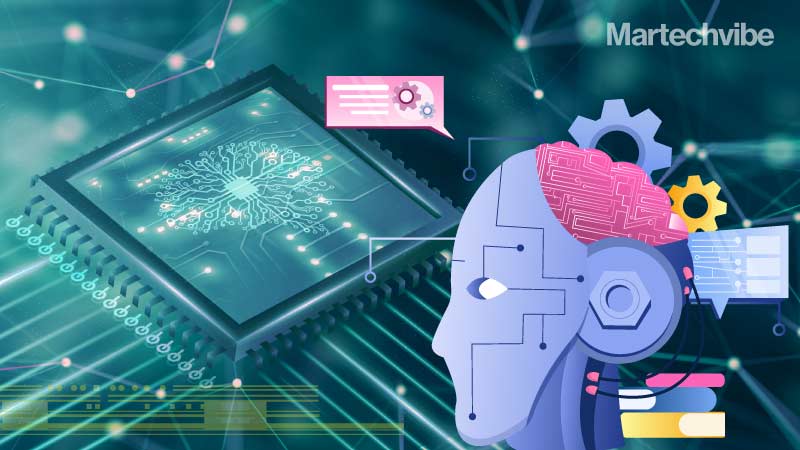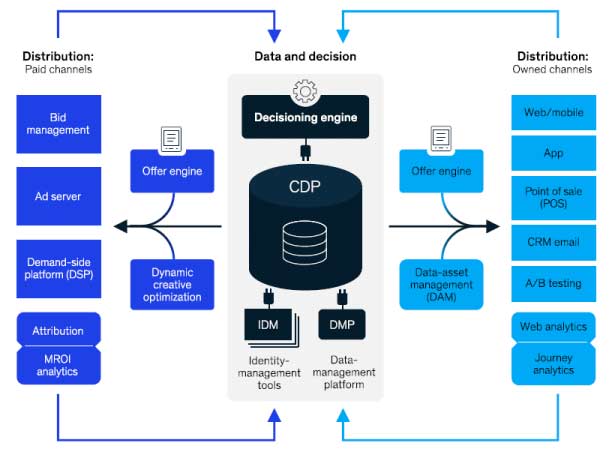How AI Is Transforming DAM And MarTech
AI-powered DAM can provide the infrastructure to connect a company’s martech platforms to deliver a personalised and unified content experience for customers As companies create more visual content, they must manage their assets and processes efficiently. It is not only the management of essential digital assets but also the optimised presentation of visuals, quality and […]
Topics

AI-powered DAM can provide the infrastructure to connect a company’s martech platforms to deliver a personalised and unified content experience for customers
As companies create more visual content, they must manage their assets and processes efficiently. It is not only the management of essential digital assets but also the optimised presentation of visuals, quality and performance delivered, speedy load times across any device. Digital Asset Management (DAM) solutions have aided the continuity of visual content coordination. And the addition of AI has brought about incredible gains in productivity and efficiency and made DAM a must-have for companies looking to boost their marketing capabilities.
Evolution Of DAM Through AI
Over the past two years, DAM systems have matured to facilitate truly dynamic and organisation-wide capabilities across the entire spectrum of asset management. With modern DAM systems, digital assets can be moved efficiently through an end-to-end pipeline from creation to distribution.
Nevertheless, while integrating AI functionality into your martech stack, it needs to be looked at as a tool that can help get to the solution better. When implemented correctly, AI-integrated DAM software can help content managers to fix various problems a brand may face while improving the overall customer and brand experience.
With the advent of AI, high-performance DAMs are becoming mission-critical for companies pursuing customer-centric marketing and experience programs.
AI with DAM can provide the infrastructure to connect a company’s martech platforms to deliver a personalised and unified content experience for customers. AI helps make a standard DAM an intelligent automation tool, enabling the DAM to become a digital media supply chain capable of delivering an omnichannel customer experience (CX) at scale. These intelligent, performance-grade DAMs can help organisations reach the right customers, with the right content, at the right time.
As many marketers know, any external or internal asset goes through multiple rounds of time-consuming edits and reviews before heading out the door. In such cases, AI can provide a solution with every step of the way, allowing marketers to focus on the big picture instead of getting too involved with the tedious steps.

Image Source: McKinsey
Importance of Auto-tagging Assets
If a DAM is handling thousands, or millions, of digital assets that are massive in size, like high-end videos, having a DAM that can utilise AI to auto-tag a percentage of those assets can prove to be invaluable for saving significant amounts of time and effort in manual uploading and tagging.
Intelligent DAM solutions use AI to automate the descriptive tagging of up to 60-70 per cent of your digital assets. Assigning confidence scores to assets, and once done, can be used to route the material for automated delivery and activation. Quality meta-tagging is critical for searching and locating assets for various use cases l. At times, employees might spend hours just trying to dig through files to find the right one for a particular use case. Intelligent DAM solutions can search across numerous metadata fields in less than a second, making it way easier to find what you need, whenever you need it.
Having a DAM with several extensive permissions and security policies, combined with a customisable language-independent search, can save time and money by making content easier to discover and sort.
AI For Analysis And Prediction
AI can help marketers monitor industry and company trends in real-time. Knowing what is up-and-coming can be a massive advantage for any marketing campaign, as content perceived as original or unique can leave a lasting impression on key audiences.
AI can analyse how current assets stored within a DAM system are performing, moving beyond just trend predictions, delivering data-backed recommendations on what assets to use together, which copy performs best, and even providing edits that can improve performance based on trends from previously used assets.
Based on historical data, it can predict multiple audience reactions and sentiments, letting marketers know beforehand what might be successful without going through the work of actually creating and testing multiple assets. This allows marketers to operate more efficiently and create data-driven campaigns that better meet KPIs.
Another use case of DAMs enabled with AI can be found in facial and speech recognition. An AI algorithm present can search still images and videos to identify gender, age, and location of subjects. An example of such a system is the OpenText Digital Asset Management for SAP Solutions which can identify speakers by searching across databases of millions of images on IMDB, Wikipedia, and other databases. In addition to recognising people, the system can easily recognise objects and offers complete speech detection and optical character recognition (OCR) technology, making both speech and on-screen text fully searchable.
Critical Considerations For Better Implementation
A few key points to keep in mind while implementing AI with your DAM are:
- Feedback received from projects should be used to improve the AI
- When updating an AI, assets tagged by an AI model in your DAM library should be reanalysed
- Separating cognitive metadata from human-generated metadata is essential to better associate training data
- The cognitive metadata being used should be filterable and convertible
A DAM without AI and automation is merely a standard software usable for primary internal corporate use cases. An intelligent DAM can manage the entire content lifecycle for marketing and customer experience teams.
With robust functionalities such as automated tagging, text and facial recognition, and automated content delivery, such DAMs serve as your entire enterprise’s digital media supply chain.
However, it is also important to remember, AI should be there to support a team, not replace it. Human monitoring, proofing, and validation are vital in keeping accuracy and relevance to the business. AI does not always have the context needed, especially at the start. So the human touch can add the necessary nuance needed to keep things smooth and assets easily discoverable.
If you liked reading this, you might like our other stories






